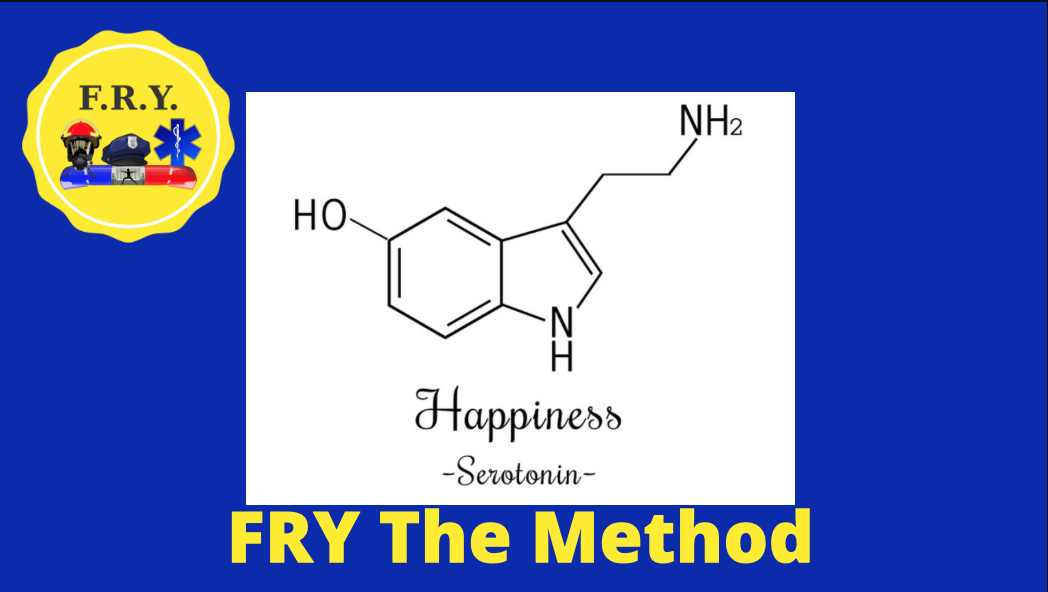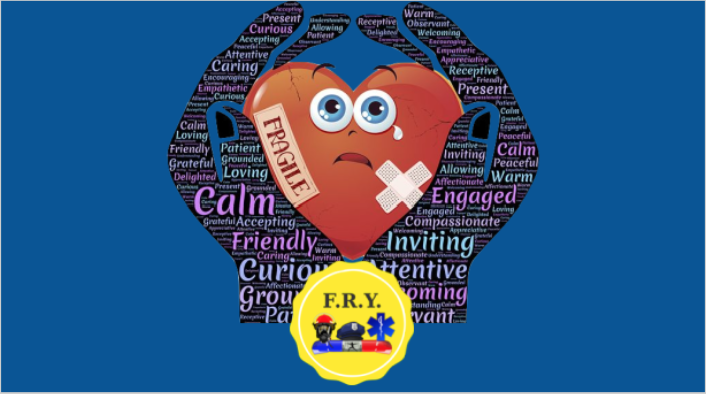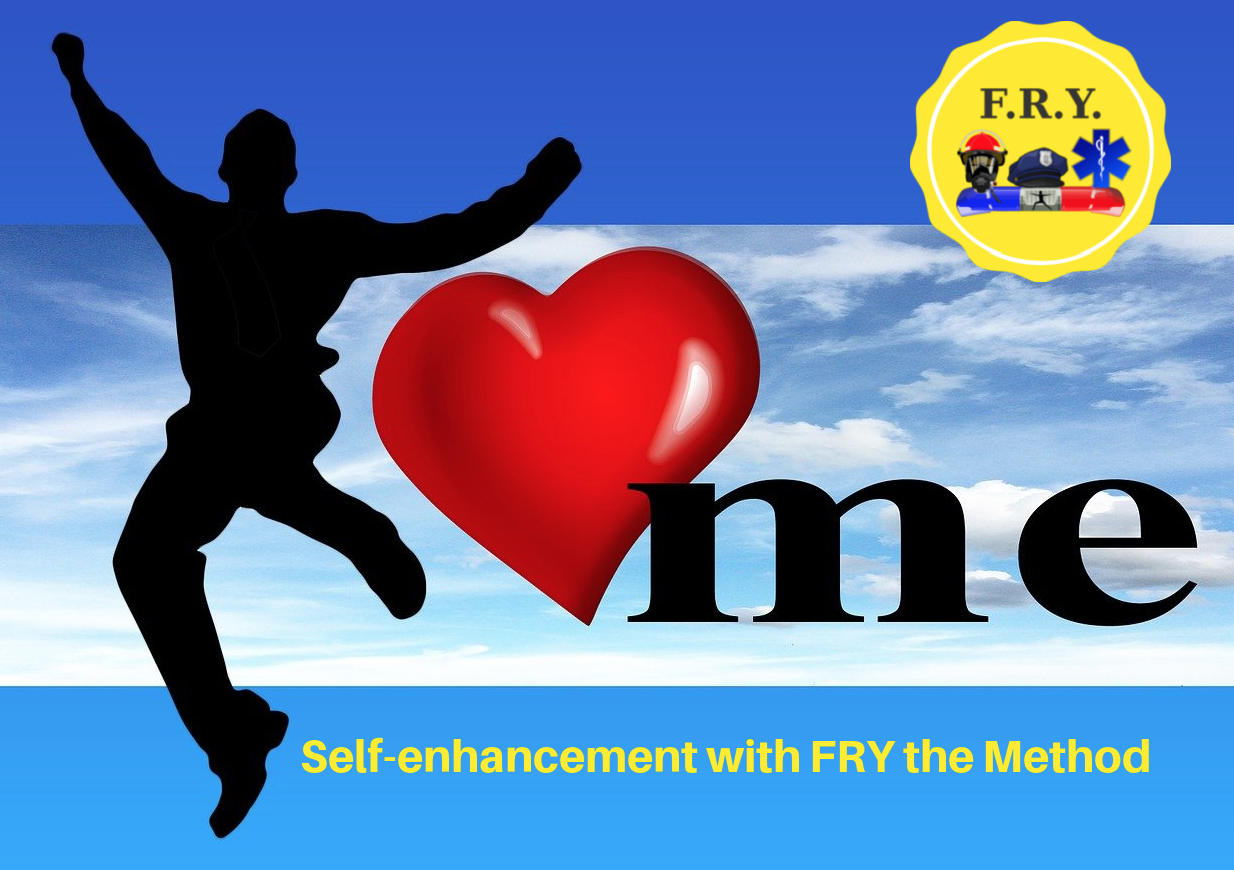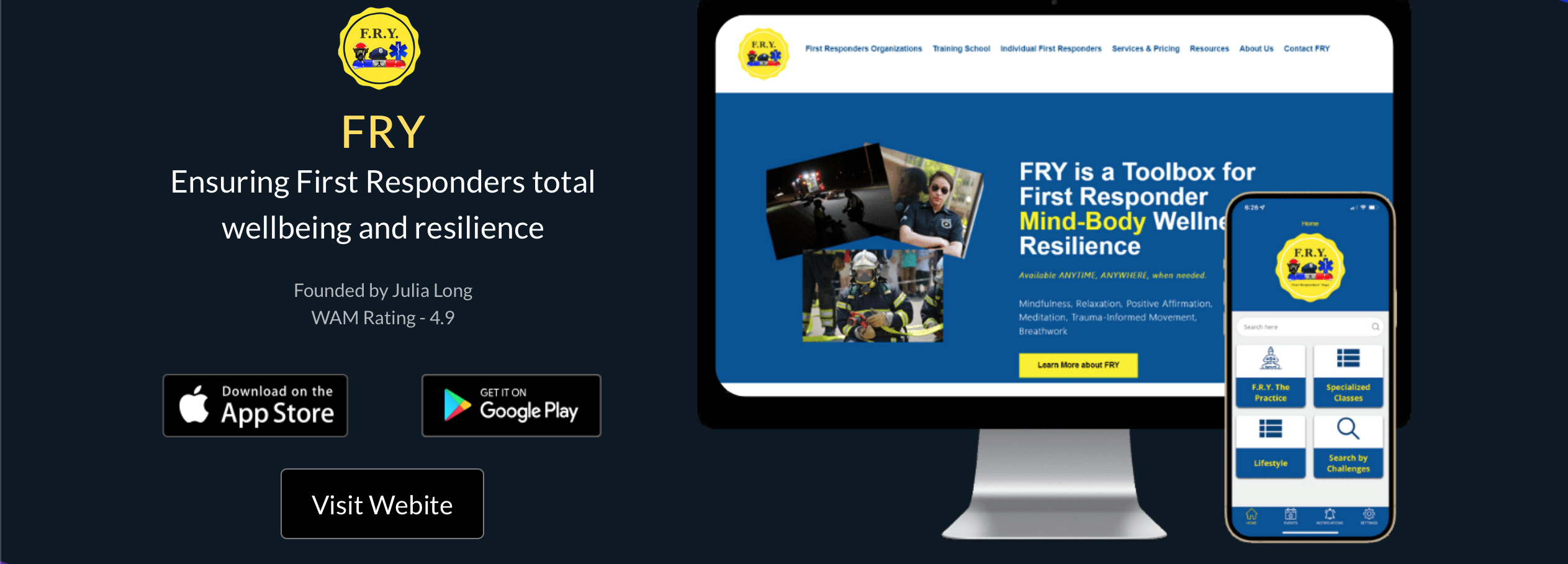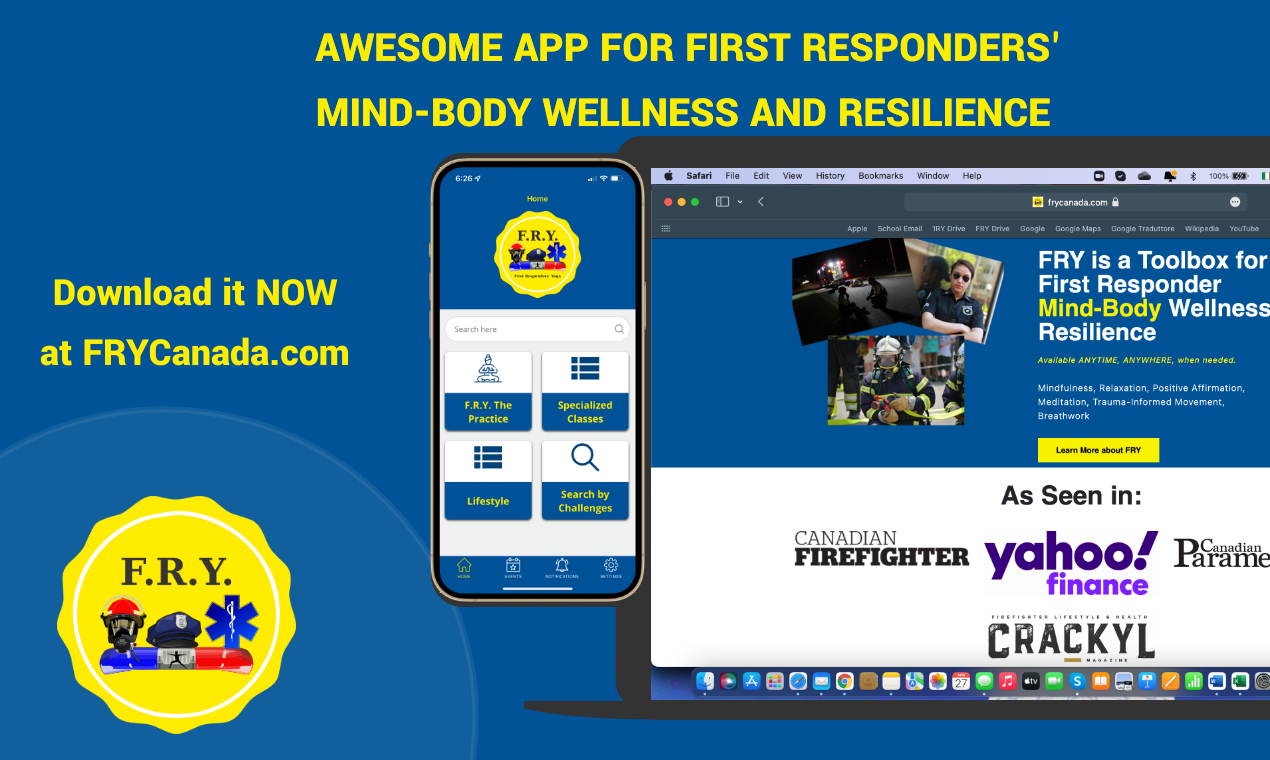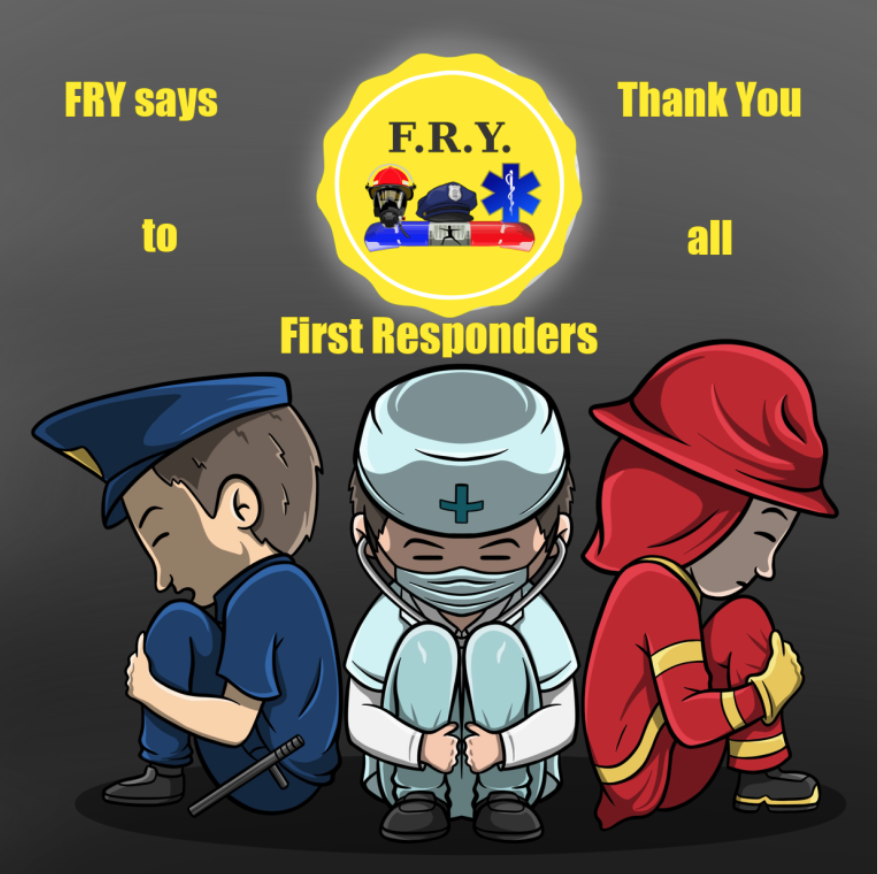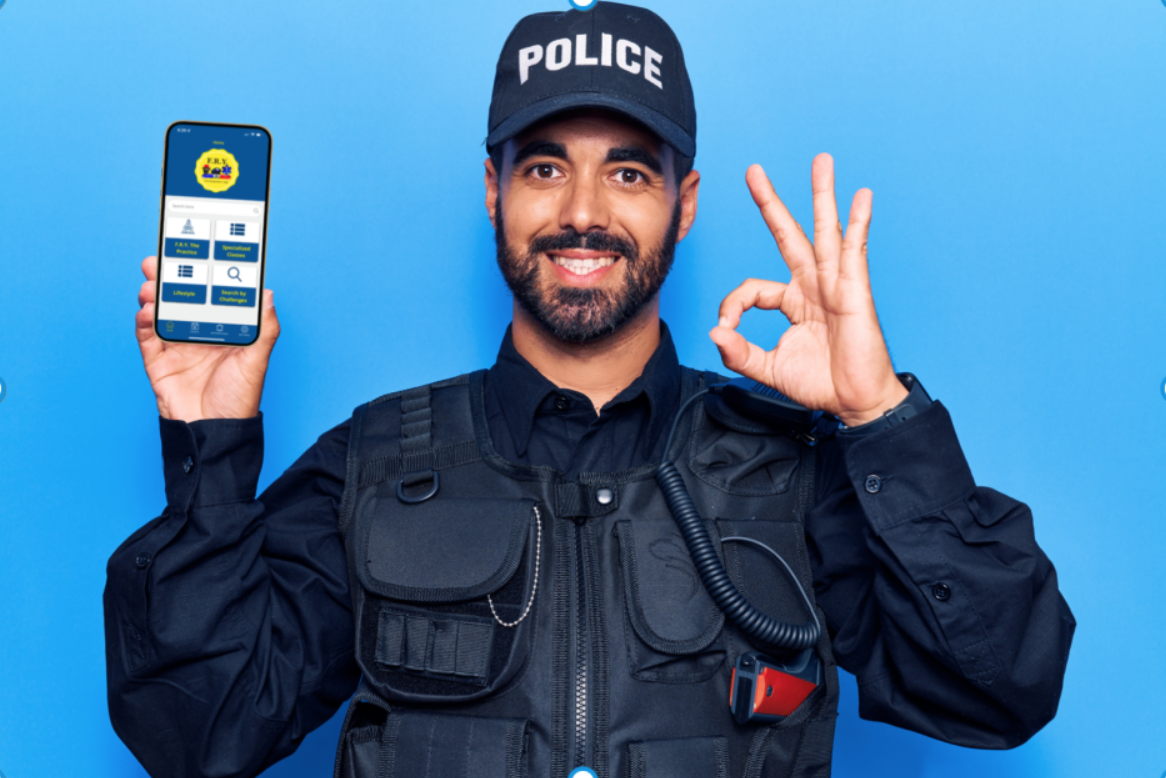The Science Behind FRY The Method for First Responders
A list of Research supporting each of the element belonging to FRY The Method for First Responders.
FRY Canada conducted:
- Qualitative interviews of First Responders across the 3 services (Fire, Police, Paramedic) and Dispatch; and
- Literature review of mind-body injuries of First Responders
in 2018 and 2021 as preliminary investigation in the development of FRY The Method and FRY The APP.
The book “F.R.Y. First Responders’ Yoga. The BOOK” is the culmination of these interviews and literature reviews paired with fitness training, advanced yoga education and direct experience as First Responders.
https://www.frycanada.com/books/
What FRY Canada heard from First Responders:
There is no time for self-care after shift with home life and personal responsibilities;
- They cannot follow regular weekly classes due to their erratic shifts; and
- There is no ONE source they may go to for their energetic workouts, stretching, meditation, relaxation, mindfulness or other stress relief techniques NOR are they specific to First Responder needs.
https://www.frycanada.com/individual-first-responders/
Generalizable Mindfulness-Based Strategies for First Responders
Generalizable Mindfulness-Based Strategies for First Responders such as Large and Deep Exhale, Diaphragmatic Breathing, Progressive Relaxation, Mindfulness Imagery increase self-awareness, lead to “decentering” (a non-identified awareness of the experiences whose consequence is a reduction of emotional reactivity), promote intentional responses, enhance self-compassion, and ultimately decrease suffering.
The mind-body interventions have been shown to directly promote First Responders’ mental and physical health while providing increased resilience when facing work-related stressors.
The American Journal of Psychotherapy, July 2018, Summary of mindfulness-based benefits and empirical research.
Strategies for First Responders Mental Health
A scoping review was conducted using the PubMed database (1966 to October 1, 2020) and the Google Scholar database (October 1, 2020) found:
- Strategies for supporting mental health and well-being need to be implemented early in the First Responder career and reinforced throughout and into retirement (Begin in training).
- They should utilize holistic approaches which encourage “reaching in” rather than placing an onus on First Responders to “reach out” when they are in crisis. (Develop a supportive community in good times to be there in the bad times).
Smith E, Dean G, Holmes L. Supporting the Mental Health and Well-Being of First Responders from Career to Retirement: A Scoping Review. Prehosp Disaster Med. 2021 Aug;36(4):475-480. doi: 10.1017/S1049023X21000431. Epub 2021 Apr 30. PMID: 33928892.
Breathwork:
Yogic breathing is a unique method for balancing the autonomic nervous system and influencing psychologic and stress-related disorders. Mechanisms contributing to a state of calm alertness include increased parasympathetic drive, calming of stress response systems, neuroendocrine release of hormones, and thalamic generators – a set of neurons in the thalamus that sets up a clear rhythm in a related cortical area (due to breathwork).
Journal of Alternative and Complementary Medicine 11 Issue 1: March 4, 2005. Richard P. Brown and Patricia L. Gerbarg.The Journal of Alternative and Complementary Medicine.Feb 2005.189-201.
Functional Movement:
- Functional fitness improvements after a worksite-based yoga initiative (Firefighters). Improvements were noted in trunk flexibility and perceived stress. Participants also reported favorable perceptions of yoga: feeling more focused and less musculoskeletal pain.
Cowen VS. Functional fitness improvements after a worksite-based yoga initiative. J Bodyw Mov Ther. 2010 Jan;14(1):50-4. doi: 10.1016/j.jbmt.2009.02.006. PMID: 20006289.
- Mindfulness-Based Stretching and Deep Breathing Exercise reduce the prevalence of PTSD-like symptoms in individuals exhibiting subclinical features of PTSD.
Kim SH, Schneider SM, Bevans M, Kravitz L, Mermier C, Qualls C, Burge MR. PTSD symptom reduction with mindfulness-based stretching and deep breathing exercise: randomized controlled clinical trial of efficacy. J Clin Endocrinol Metab. 2013 Jul;98(7):2984-92. doi: 10.1210/jc.2012-3742. Epub 2013 May 29. PMID: 23720785; PMCID: PMC3701284.
- Therapeutic yoga is defined as the application of yoga postures and practice to the treatment of health conditions and involves instruction in yogic practices and teachings to prevent, reduce or alleviate structural, physiological, emotional and spiritual pain, suffering or limitations. Results from this study show that yogic practices enhance muscular strength and body flexibility, promote and improve respiratory and cardiovascular function, promote recovery from and treatment of addiction, reduce stress, anxiety, depression, and chronic pain, improve sleep patterns, and enhance overall well-being and quality of life.
Woodyard C. Exploring the therapeutic effects of yoga and its ability to increase quality of life. Int J Yoga. 2011 Jul;4(2):49-54. doi: 10.4103/0973-6131.85485. PMID: 22022122; PMCID: PMC3193654
- Pre-to-post-yoga sessions, levels of positive emotions (engagement, tranquility and revitalization) increased while exhaustion decreased.
Complementary Therapies in Medicine Volume 49, March 2020, 102354 Exploring how different types of yoga change psychological resources and emotional well-being across a single session
Relaxation:
- Relaxation training and yoga most effectively reduced anxiety symptoms among older adults. Furthermore, the impact of some relaxation interventions remained in effect for between 14 and 24 weeks after the interventions.
Effects of relaxation interventions on depression and anxiety among older adults: a systematic review – Piyanee Klainin-Yobas, Win Nuang Oo, Pey Ying Suzanne Yew & Ying Lau, Published online: 09 Jan 2015
- Relaxation is as effective as cognitive and behavioural therapies in the treatment of anxiety disorders.
Is Cognitive-Behavioural Therapy More Effective Than Relaxation Therapy In The Treatment Of Anxiety Disorders? A Meta-Analysis” – Jesus Montero-Marin, Javier Garcia-Campayo, Alba López-Montoyo, Edurne Zabaleta-Del-Olmo, Pim Cuijpers
- Research suggests that common forms of relaxation training, such as Progressive Muscle Relaxation, Meditation, Breathing exercises, and Visualization can help individuals reduce stress, enhance relaxation states, and improve overall well-being. The study below examined three different, commonly used approaches to stress relaxation: Progressive Muscle Relaxation, Deep Breathing, and Guided imagery that are all part of FRY The Method. The result is that those techniques promote both psychological and physiological states of relaxation, offering a head-to-head comparison of stress-reduction strategies.
Effectiveness Of Progressive Muscle Relaxation, Deep Breathing, And Guided Imagery In Promoting Psychological And Physiological States Of Relaxation – Loren Toussaint, Quang Anh Nguyen, Claire Roettger, Kiara Dixon, Martin Offenbächer,Niko Kohls, Jameson Hirsch, And Fuschia Sirois – 03 Jul 2021
Positive Affirmations / Neuroplasticity:
Positive statements that can help you to challenge and overcome self-sabotaging and negative thoughts, brief phrases, repeated frequently, which are designed to encourage positive, happy feelings, thoughts, and attitudes and set goals.
Self-affirmations have been shown to:
- Decrease health-deteriorating stress (Sherman et al., 2009; Critcher & Dunning, 2015).
Clayton R. Critcher and David Dunning. Self-Affirmations Provide a Broader Perspective on Self-Threat
or you can read:
Psychological vulnerability and stress: The effects of self-affirmation on sympathetic nervous system responses to naturalistic stressors – Sherman, D. K., Bunyan, D. P., Creswell, J. D., & Jaremka, L. M. (2009). Health Psychology, 28(5), 554–562.
or you can read this Link 2
- Create an adaptive, broad sense of self which makes us more resilient to difficulties when they arise
Minakshi Rana. Positive Affirmations and its Benefits on Psychological Well-Being
- Lower stress and rumination (Koole et al., 1999; Wiesenfeld et al., 2001)
Koole, S. L., Smeets, K., van Knippenberg, A., & Dijksterhuis, A. (1999). The cessation of rumination through self-affirmation. Journal of Personality and Social Psychology, 77(1), 111–125
or you can read this Link 2
- Improve problem-solving under stress
Creswell JD, Dutcher JM, Klein WM, Harris PR, Levine JM. Self-affirmation improves problem-solving under stress. PLoS One. 2013 May 1;8(5):e62593. doi: 10.1371/journal.pone.0062593. PMID: 23658751; PMCID: PMC3641050
- Exhibit significant positive correlation to feelings of hopefulness and promote adaptive coping, goal achievement, and better health
Taber JM, Klein WMP, Ferrer R, Kent E. Optimism and Spontaneous Self-affirmation are Associated with Lower Likelihood of Cognitive Impairment and Greater Positive Affect among Cancer Survivors Annals of Behavioral Medicine 50(2) November 2015
or read Link 2
Mindfulness:
- Mindfulness Training Improves Quality of Life and Reduces Depression and Anxiety Symptoms Among Police Officers
Mindfulness Training Improves Quality of Life and Reduces Depression and Anxiety Symptoms Among Police Officers. Front. Psychiatry, 26 February 2021
or read Link 2
- Mindfulness training with First Responders leads to increased resilience and reduced burnout
Kaplan, J. B., Bergman, A. L., Christopher, M., Bowen, S., & Hunsinger, M. (2017). Role of resilience in mindfulness training for first responders. Mindfulness, 8(5), 1373–1380.
- FRY Interview with Neurologist Gus Castellanos “The Benefits of Mindfulness for First Responders” – 2022
https://www.frycanada.com/video-registration/#NeurologistMindfulnessForFirstResponders
Meditation:
- Meditation practices may impact physiological pathways that are modulated by stress and relevant to disease. Specifically, engagement in compassion meditation may reduce stress-induced immune and behavioral responses.
Thaddeus W.W.Pace, Lobsang TenzinNegi, Daniel D.Adame, Steven P.Cole, Teresa I.Sivilli, Timothy D.Brown, Michael J.Issa, Charles L.Raison. Effect of compassion meditation on neuroendocrine, innate immune and behavioral responses to psychosocial stress. Psychoneuroendocrinology Volume 34, Issue 1, January 2009, Pages 87-98
- Meditation increases grey matter and this benefit is part of the underlying neurological correlate of long-term meditation independent of a specific style and practice
Eileen Luders, Arthur W.Toga, Natasha Lepore, Christian Gaser. The underlying anatomical correlates of long-term meditation: Larger hippocampal and frontal volumes of gray matter. Neuroimage. Volume 45, Issue 3, 15 April 2009, Pages 672-678
Workplace Health Initiatives:




